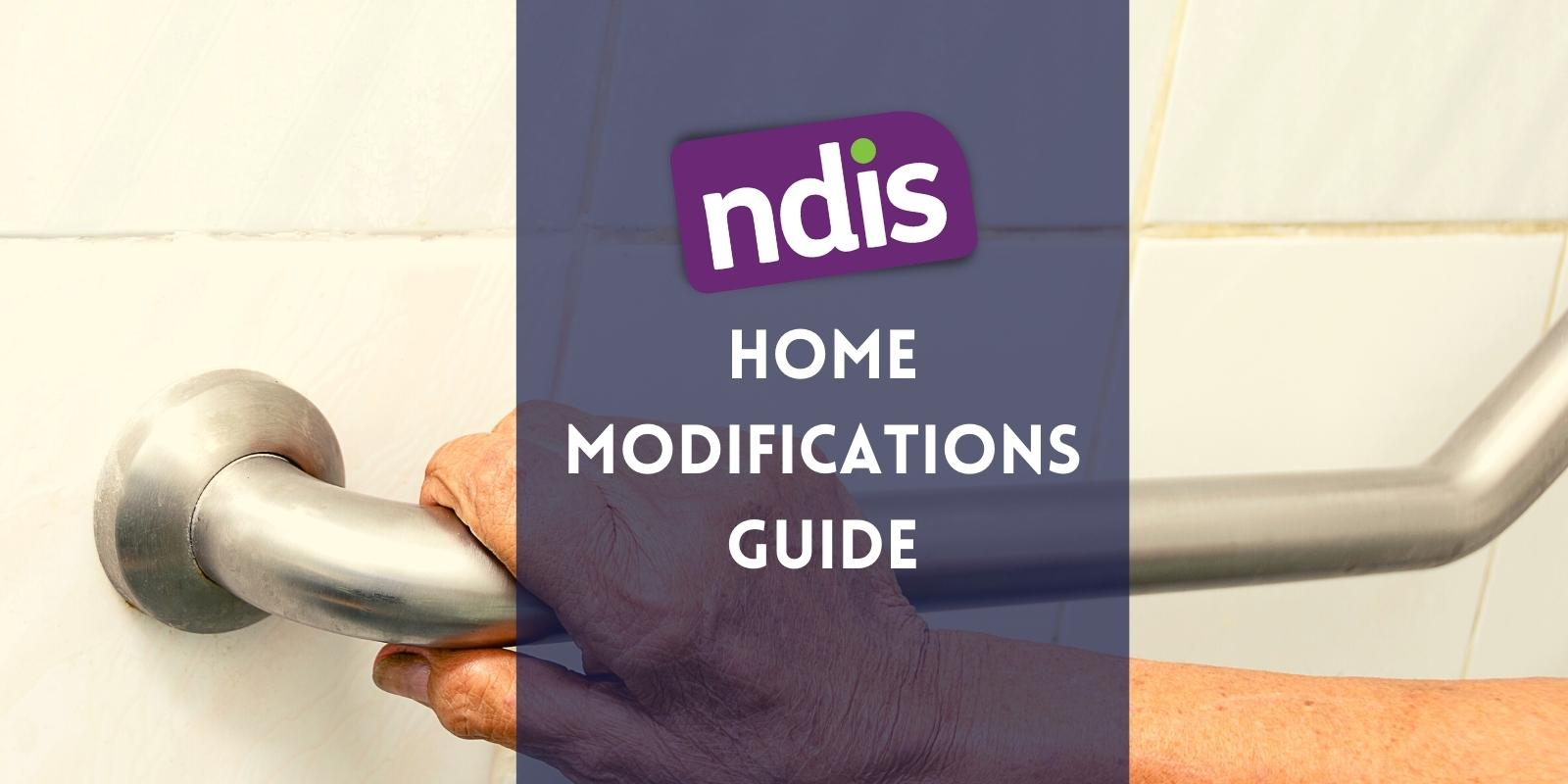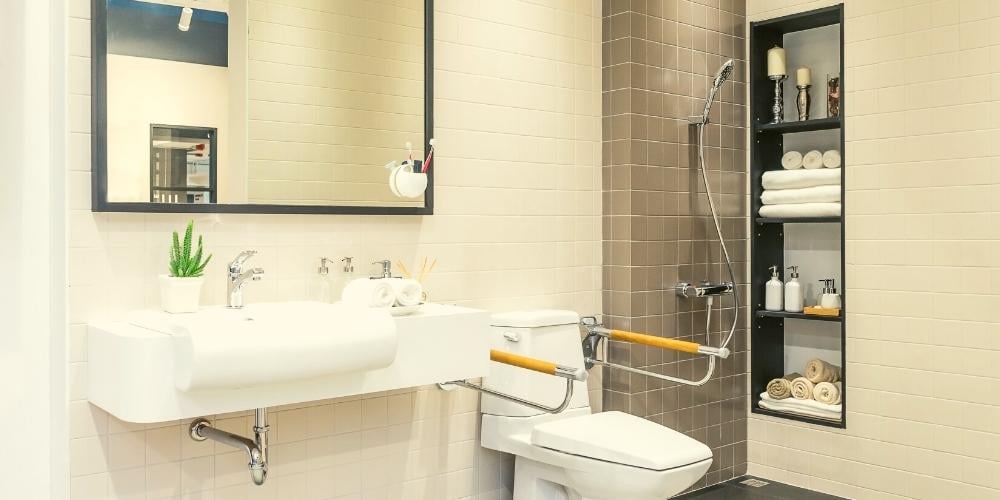NDIS Home Modifications Guide for The Elderly & Disabled

October 24, 2022
For someone living with a disability, remaining at home can be made more difficult by obstacles such as inadequate space for a wheelchair, poor lighting, inability to reach countertops, or trouble getting into and out of the bath or shower, for example. For both Australians living with a disability and elderly Australians, home modifications can make all the difference. Thankfully, the NDIS can help.
NDIS home modifications for the elderly or disabled can mean that your loved one can live at home, more safely, for as long as possible. In this guide, we reveal all you need to know about NDIS home modifications, including what’s covered, how to access funding, who can complete the work, and more.
Explore our comprehensive NDIS & Disability Services Guide for in-depth insights and support options tailored to your needs.
Are older Australians covered by the NDIS?
NDIS funding is designed to cover Australians between the ages of 7 and 65. For older Australians not already covered by the NDIS, the Commonwealth aged system, known as My Aged Care, is where to turn. Home Care Packages for elderly Australians, for example, are a part of Australia’s aged care program.
However, if you or your loved one are already receiving funding under the NDIS before the age of 65, you can continue to access the same funding after turning 65. In fact, elderly Australians already covered under the NDIS can choose whether to continue to receive funding by switching to the My Aged Care system. What you choose should depend on the type of funding needed, what’s covered under each program, and whether there are eligibility requirements for switching to the aged system.
Not sure? Speak to your local NDIS office for more information.

Who can access NDIS home modifications?
The National Disability Insurance Agency (NDIA) provides funding directly to those living with a disability, including elderly Australians experiencing a disability such as limited mobility, or dementia, if they’re already accessing the funding before they turn 65.
The types of modifications available depend on the NDIS plan and what’s needed to help live safely and comfortably at home. This can include the structure, layout, or fittings in a home. NDIS home modifications may be included in an NDIS plan if:
- The disability means that you or your carers can’t reasonably access and use rooms and spaces in your primary residence;
- The home, in its current condition, has significant adverse impacts on your ability to continue living in the home and accessing current care arrangements, and;
- A qualified Occupational Therapist has conducted an assessment of the home and recommended that NDIS home modifications be carried out (considering all possible alternatives, including the use of assistive technologies and other equipment).
As with any type of building work, NDIS home modifications for the elderly or disabled will be subject to laws, regulations, and building codes. These regulations should be understood by your contractor, and are available in the NDIS Home Modifications Operational Guidelines. For more complex home modifications, consult the Complex Home Modification Guide for builders and assessors.

Determining if Your NDIS Home Modifications are Covered
NDIS participants can request funding for NDIS home modifications via the ‘capital budget’ account within their NDIS plan. To grant funding for these modifications, as mentioned, an Occupational Therapist will need to conduct an assessment. In addition, the modifications requested must meet the ‘reasonable and necessary’ criteria (outlined in the NDIA Act of 2013, section 34 (1)(a)-(f) 2013). The NDIS considers, under these conditions, whether NDIS home modifications are:
- Cost efficient – whether they represent greater value compared to lower-cost alternatives.
- Offer value through longevity – that the supports are built to last and provide ongoing value over time.
It’s important to know that NDIS home modifications that are estimated to cost more than $15,000 require you to submit a quote before initiating any construction. For NDIS home modifications with costs estimated at more than $30,000, you must engage an NDIS Registered Building Works Project Manager (BWPM). This project manager can assist you with hiring builders, consulting with suppliers, and designing the implementation of your modifications.
What type of NDIS home modifications are covered?
NDIS home modifications funding covers a wide variety of modifications, from simple installations to more complex structural overhauls. There are three categories that NDIS home modifications will fall under:
- Simple home adaptions: Low cost, such as grab rails or mounted shower chairs. Generally easy for participants to access.
- Minor home modifications: Non-structural, but requiring experienced professional support to identify and deliver the right solution. The scope of work and associated costs are relatively low, for example, non-structural door widening.
- Complex Home Modification (CHM): Involves structural changes that are relatively higher in cost, higher risk, and require a greater level of certification. CHMs typically have a greater impact on participants’ lives, and may involve work on a combination of different areas within the home, such as bathroom, kitchen, bedroom, or access to the home.
Some of the types of modifications that may be covered under your NDIS plan include:
- Installing grab rails for the bathroom, bath, and/or shower
- Installing ceiling hoists
- Widening doorways and hallways to allow access for a wheelchair
- Installing ramps to make entrances suitable for someone with impaired mobility
- Installing more appropriate lighting for visually impaired persons
- Redesigning frequently used rooms such as bedrooms, kitchens, and living rooms for easier access (such as lowering kitchen benches, widening turning spaces, etc.)
For more information and to access guides for NDIS home modifications for elderly or disabled Australians, see the NDIS Home Modifications Explained page.

What’s not covered under NDIS home modifications funding?
There are some exceptions to what will be covered under the NDIS home modifications funding offered by your NDIS plan. These exclusions might include:
- Any modifications that are likely to cause harm to you or others
- Modifications that are not related to the disability
- Supports that are already covered by other supporting funding programs
- Modifications that relate to day-to-day living costs
Knowing what is and isn’t funded by the NDIS is important for your planning. The Occupational Therapist assigned to assess your home can help you to determine what is available and what is covered, so be sure to ask them for this information.
Who can fit and monitor NDIS home modifications?
NDIS participants can choose to pay builders directly for their home modification work, and as such, can choose their own builders. However, if you’re deciding to go ahead with modifications to you or your loved one’s home, it is advisable to select a provider that is either familiar with the NDIS and making NDIS home modifications for the elderly or disabled, or is a registered provider (or best of all, both).
You can find more information about providing home modifications here.
Care For Family and the NDIS
As a registered NDIS provider, Care For Family understands the challenges facing elderly and disabled Australians. NDIS home modifications for the elderly or disabled can make the world of difference, for both you and your care team – making it safer and more comfortable for you or your loved one to live in your own home, and for your Care For Family care team to offer you the best of care. If you have more questions about the NDIS, you can visit our NDIS FAQs page, read more about our NDIS services, or get in touch with our team today.
Related Posts

